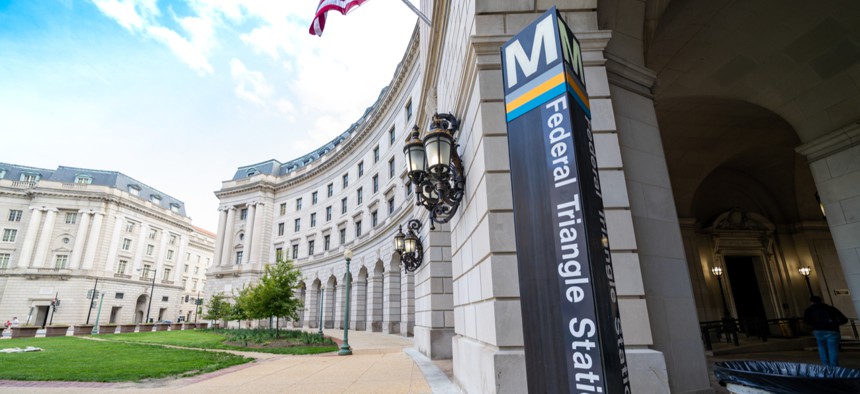
Shutterstock.com
Updated Trump Administration Goals Reveal Plans for the Federal Workforce
White House also highlights progress in streamlining some government operations.
The Trump administration has released an update to its agency and interagency goals, with a renewed focus on developing talent and management within federal agencies.
The White House’s new information on its goals for improving the operations of government—the first update of fiscal 2020—outlined several reforms the administration said marked significant progress toward accomplishing its priorities. Others remain in the pilot phase as agencies strive to demonstrate their long-term viability.
The Office of Management and Budget, which oversees the goals and the Performance.gov website that hosts updates to them, highlighted a few cross-agency priority goals that have now reached a “level of maturity” enabling agencies to shift from demonstrating their potential to institutionalizing them. Security clearance reforms, for example, have led to an elimination of the investigations backlog, leaving the number of pending cases at a steady state of 200,000. That is down from its peak of 725,000 two years ago, allowing the Office of Personnel Management and Defense Department to slash the average time to approve a secret clearance from 173 days to just 56. The modernization of the infrastructure permitting process has also been upgraded, OMB said, noting that agency scorecards are now available.
On its federal workforce goals, OMB and OPM created a new objective to provide supervisors with best practices and guidance to better manage talent “from entry to leadership level.” They will also push agencies to ensure new leaders are trained on “critical leadership competencies”—including the ability to address performance and conduct issues—within one year of entering management. OPM also pledged to better train human resources professionals to provide services to managers and rank-and-file workers. It still aims to deploy a tool enabling federal supervisors to provide real-time feedback to their workers, but the agency was forced to pushed back its timeline until later this year.
The administration has completed its “total compensation study,” in which it obtained “market information” to study federal employees’ base salaries, benefits and awards. OPM did not respond to questions about the results of that study or what it planned to do with it. OMB removed a previously listed goal stating it and OPM would review the study results to “develop a strategy to apply findings” by the end of the fiscal year.
As part of its ongoing efforts to reskill federal employees whose jobs are becoming obsolete, OPM and other agencies had set the goal to “rapidly scale” robotic process automation programs that would help identify feds to deploy to new roles. They have redefined that goal to instead launch an emerging skills pilot program to “expose employees whose work is transforming due to automation to career path options for redeployment.” The program will focus on employees at the Internal Revenue Service.
The administration revised its contracting reforms to create a “frictionless acquisition” cross-agency priority goal, which will focus on “just-in-time delivery” and greater resiliency. It highlighted a pilot program to bring on customer experience experts as a key development in improving the delivery constituent services at federal agencies. The hiring initiative led to 800 applicants across a dozen agencies and 20 hires, the White House said.
OMB suggested that the ongoing novel coronavirus pandemic has spurred agencies to adopt some of the lessons learned from their efforts to meet the goals.
“The collective shift in focus to the federal COVID-19 response this past spring afforded opportunities to demonstrate the flexibility and adaptability of agency management processes to meet a changed operating environment,” OMB said.
The Trump administration noted in its security clearance reform effort, for example, that agencies have adopted various policies to enable "safe personnel vetting during COVID-19," which "allowed background investigations to continue with minimal disruption and agencies to bring on mission-critical personnel." While it also highlighted its “getting payments right” goal as one that had reached a level of maturity allowing for institutionalization, the various agencies involved in implementing it said the pandemic would complicate their progress.
“The percentage and amount of improper payments will be higher than pre-COVID-19 levels,” the agencies said.







